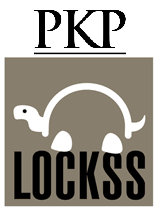Sculpture as an answer to the Love of God in the light of John Paul II
DOI:
https://doi.org/10.51743/cpe.66Keywords:
John Paul II, art, vocation, sculpture, dialogue between faith and artAbstract
Saint John Paul II in his letter addressed to artists made a call to those who have this special vocation towards beauty, as he conceived art as the good that saves, as “a bridge towards religious experience”, as the means that by transforming
matter allows souls to open to the sense of the eternal and that leads them to God. Art then becomes a vocation at the service of good, capable, through our sensitivity, of elevating our spirit, of enlightening our path, especially in moments of confusion and difficulty, of causing wonder and awe in our souls, and thus giving us back our desire to live and enjoy the beauty that surrounds us. All of this is what I try to capture in my work as a sculptor.
Downloads
Global Statistics ℹ️
|
335
Views
|
214
Downloads
|
|
549
Total
|
|
References
F. DOSTOIEVSKI, El idiota, p. III, cap. V.
Juan Pablo II, Mensaje a los Artistas (8 de diciembre 1965): AAS 54 (1966), 13.
Juan Pablo II, Carta del Santo Padre Juan Pablo II a los artistas (4 abril de 1999).
Downloads
Published
How to Cite
Issue
Section
License
The author reserves the rights (copyright) of the published works, and the journal encourages and allows their reuse, from the preprint. The works are published in the electronic edition of the journal under a license "Creative Commons Attribution / Attribution-NonCommercial 4.0 International Public License - CC BY-NC 4.0", and can be copied, used, disseminated, transmitted and publicly exhibited.
The author / s partially transfer the property rights (copyright) of this work for the printed and online editions, provided that:
- The authorship and original source of its publication (magazine, publisher and URL of the work) is cited.
- Are not used for commercial purposes.
- The existence and specifications of this user license are mentioned.
It also declares to have respected the ethical principles of research and to be free from any conflict of interest.
"C.P.E." encourages the authors and the scientific community to the maximum promotion and dissemination of the works in their final version through:
1) Your list of contacts (emails) and social networks (Facebook, Twitter, LinkedIn ...).
2) Institutional repository of your University and public repositories (Mendeley, Cosis ...).
3) Scientific social networks (ResearchGate, Academia.edu, Kudos ...).
4) Personal or institutional website, blog, etc.
5) Google Scholar, ORCID, ResearchID, ScopusID, Dimensions, PlumX ...
6) Printed copies purchased directly and sent to specialists for reading and subsequent citation if appropriate.




















1.png)
1.png)

1.png)





.png)
.png)

.png)
1.png)
1.png)
